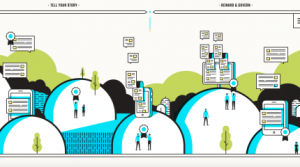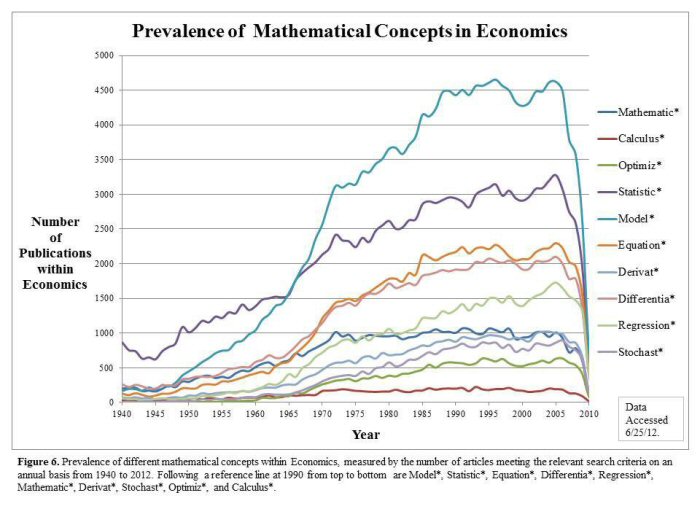Contents
The scope of this article is to invite investors to focus on decentralised investment and its environmental cost. However, a valuation fee may be incurred if the loan agreed is asset-dependent or structured to include this cost. This is an open-access article distributed under the terms of the Creative Commons Attribution License . The use, distribution or reproduction in other forums is permitted, provided the original author and the copyright owner are credited and that the original publication in this journal is cited, in accordance with accepted academic practice.
In this session Amy Cameron and Yesmean Luk looked at the opportunities for telcos in health. As a growing industry, with a national focus and significant digitisation challenges, healthcare is an attractive vertical for telcos seeking to build new revenues beyond core communications services. MediLedger is a leading example how long does it take to mine bitcoin of a blockchain protocol that enables companies across the prescription drug supply chain to verify the authenticity of medicines, as well as expiry dates and other important information. One of the biggest challenges around blockchain is distinguishing between the real blockchain-based applications and the hype.
- Platforms like Coinbase, Etoro and Bitfinex are prime targets for hacks so be careful of storing your cryptocurrency on exchanges.
- Please note, clients must have full marketable title for each asset they intend to secure a loan against.
- Cryptocurrencies have emerged as one of the most intriguing, volatile investments in the world.
- With a family to care for, Willett could not take any significant risks and directly invest in Bitcoin as it was difficult to ensure the security of his investment.
- In the past, private market funds were only available to huge market investors.
This is really exciting, because I’ve always come from a view of making healthcare easier to access, easier to manage and easier to pay for, and now we’re entering the realm of easier to measure and instant rewards based on result, instead of just paying for services rendered. We are also building very innovative patient engagement cards like ‘How Are You Feeling Today? For other means of regulating ICOs, it is also possible to list the negative effects they would bring to stakeholders, but it is reasonable at this point to argue that such occurrences are unavoidable whichever means are chosen. It is because there exists the “regulation paradox,” which we define as the fundamental conflict between regulation and the principle of decentralization. Regulation protects individuals by decreasing risks, traded off with individuality, but decentralization enhances individuals by transferring power to individuality, but also at the cost of escalated risks.
Benefits From ICO Market
Validators are network node operators that validate data similarly to PoW systems, but there is no energy-intensive computational process to earn the right to validate. Instead of solving proofs of work, validators “stake” some of the blockchain’s native tokens to become eligible for selection as a validator node. The prospective validator will essentially stake crypto tokens native to the blockchain as collateral. More recently in 2018, as the market has witnessed the large fluctuations in cryptocurrency prices, resulted from the high risks of smaller-scale tokens that had been flushing into the market, a new trend of stable cryptocurrency, or in short “stablecoin,” has started to take over.

The result is that a distributed set of nodes who don’t trust each other can achieve agreement on a growing chain of records, called blocks, that list transactions, i.e. transfers of Bitcoin. The protocol does this without requiring a central trusted authority , or a trusted intermediary , and without allowing bad actors to transfer the same money to more than one person (a problem known as “double spending”). Our blockchain solutions are being used in real-world chemicals supply chain management systems. You’ve probably heard of at least a few cryptocurrencies other than Bitcoin — Ether is easily the second biggest coin in the market, and we’d bet you’ve seen a meme or two about Dogecoin by now — but there are actually thousands of different cryptos out there. We’ve previously covered many promising remote monitoring use cases in our articles on 5G and edge computing in digital health. The emergence of much more complete, digitised and shareable patient health records will have a profound impact on the healthcare market by fuelling more advanced analytics.
However, since we are in the early stages of “environmentally friendly” blockchain, environmentally cautious investors need to be aware of the “creeping crypto” in their portfolios. Until then, ESG investing needs to be approached with a dash of scepticism. In short, cryptocurrency – whether the consensus is through PoS or PoW – has no place in ESG indexes until we can trace the source of its energy consumption.
SOLVE Reddit
The revolution this will provide is allowing for detailed and personalised care co-ordination even at a distance. Solve.Care recently launched its first patient wallet – known as the Care Wallet for Family – and it is now available in the App Store and Google Play so that anyone in the world can download it and use it. These wallets are usually sponsored, however, rather than being adopted by individuals or consumer-driven. The idea is that healthcare insurers, employers and other B2B clients will want to sign up their employees or members as a benefit, in order to provide access to better services. It is important to note also that because you own the wallet yourself, the service will still be useful and open to you, even if you later change employer or move jobs. Securitize, a crypto asset platform announced that it will launch $491 billion in tokenized funds for KKR’s Health Care Strategic Growth Fund II on the most eco-friendly contract platform, called an Avalanche public blockchain platform.
- Permissionless blockchain technology, on the other hand, simply does not achieve the things it claims, and the people who understand it best have pointed that out.
- To decentralise all the administrative barriers which make healthcare so complicated.
- As such we can compare it to other systems that maintain ledgers of transactions.
- Patients can also choose to share their medical records with researchers and set time limits on how long any third party can have access to their medical information.
Please note, clients must have full marketable title for each asset they intend to secure a loan against. Blockchain and the economics of crypto-tokens and initial coin offerings. In order to get a better understanding of ICOs, it is important that relevant fundamental concepts related to this topic, including blockchain and cryptocurrency, are understood in the context of further discussion.
Payment technology
Lastly, currency speculation adopted from financial and exchange markets is also rather common when many cryptocurrencies experience large swings in their prices, especially when the projects first launch, and such speculation would gradually drive to price convergence . The Arizona Care Network is a network of 5,500 healthcare providers who are all working together to deliver coordinated care for high risk, high cost, complex cases. We have just launched Care.Wallet for Physician for primary care providers of Arizona Care Network .
As the technology and ROI has already been proven, we expect this to be the most significant short-term impact of blockchain on the healthcare industry. After the initial offering the entire token supply will only exist in the secondary market. Users won’t be able to buy tokens from Solve.Care, they will have to buy them from existing token holders. The value of tokens will vary depending on how many clients are using the platform. The transaction fees between the users of the platform will also be paid in tokens.
- Distribution and Independent Research Form to cater to investors and asset managers worldwide.
- The currency exists virtually, yet the mining of a cryptocurrency uses humungous amounts of electricity.
- It’s an ergonomic interface that allows the users to be in command of all interactions with great simplicity.
- Secured loans can be completed immediately upon receiving an asset, providing all items have been assessed and the due diligence process has been completed.
As new blockchain-based business models are introduced, the regulatory agencies tuned in old practices could be reluctant in granting approvals, and a system that’s supposed to protect investors would become detrimental to market innovations. Meanwhile, https://coinbreakingnews.info/ within the discussion of ICO projects, what has been regarded by many as questionable, is the existence of the supposed “private” blockchain of OneCoin. The business claimed that it has its own blockchain from which OneCoin tokens could generate value.
People who work at big tech companies are used to designing computer systems that scale to millions of transactions per second as a minimum. The Bitcoin blockchain is essentially a public ledger of transactions. As such we can compare it to other systems that maintain ledgers of transactions. As well as security, mentioned above, another axis of comparison is efficiency. We’d certainly have problems if the internet suffered large partitions, especially because of increasing centralisation and reliance on a few big providers.
Energy use
These days pretty much everyone in the UK can do free, interbank transfers within seconds, up to £1 million, 24/7. In 2021 it handled 3.4 billion transaction, that’s an average of 110 transactions per second, although peak will probably be much higher than that, and scalability will be determined only by demand. Any real software engineer who looks at the architecture of a web3 applicationfinds it completely ridiculous. It adds an unbelievable amount of complexity and cost, for no actual benefit. A method of making demand for otherwise useless cryptocoins like Ethereum and friends, in order to on-board more people into these “greater fools” schemes that are rapidly running out of new fools. As for the claim that NFTs allow you to create “digital scarcity” — a truly bizarre boast to make — they simply cannot do anything of the kind, outside of the make-believe world of a blockchain.

When you trade forex, cryptocurrencies or CFDs you are exposed to a high risk of loss. If you find any advertisement on our site that promotes a provider offering these products, we may receive compensation from the recommendation to you . The care wallet is the personal healthcare administrator right at the centre of the Solve.Care Platform. It’s an ergonomic interface that allows the users to be in command of all interactions with great simplicity. Bitcoin is highly volatile, the price is highly speculative and the cryptocurrency market is largely unregulated.
How Solve.Care and the Metaverse Doctors Alliance are ushering in a digital healthcare revolution
The third form of stablecoins, is the non-collateralized stablecoins. These stablecoins would remain in the long term a stable value as their algorithms are designed to adjust the supply based on the price, according to theories in monetary economics. However, it should be noted that limits on how much adjustments on supply can affect the token value exist, and the coin is not completely immune to market conditions . One is the bias in assessment, which we define as the regulating agency’s subjective bias in regarding certain business models as portraying less decency than others. One example is in Canada, which is the first nation to legalize on the issue of cryptocurrencies .
It is crucial to emphasize that actual patient data does not go on the blockchain, but that each new record appended to the blockchain, whether a physician’s note, a prescription or a lab result, is translated into a unique hash function – a small string of letters and numbers. Every hash function is unique, and can only be decoded if the person who owns the data – in this case, the patient – gives their consent. Healthcare systems in every country and region are struggling with the problem of data siloes, meaning that patients and their healthcare providers have an incomplete view of medical histories. In 2016, Johns Hopkins University published research showing that the third leading cause of death in the US was medical errors resulting from poorly coordinated care, such as planned actions not completed as intended or errors of omission in patient records.


